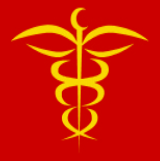|
Examining the Breast
|
 |
|
5-Minute Clinical Breast Exam Video
Using the Vertical Strip
Method favored by many physicians. This image shows the Peau d'Orange skin
changes sometimes associated with malignancy.
www.brooksidepress.org |

The breast is not round, but has a "tail" of breast tissue extending up into
the axilla (or armpit).

Palpate, using the middle third of your fingers to feel for lumps, masses,
or tenderness, moving your hands in a circular motion as you press down.

Strip the milk ducts towards the nipple, looking for bloody nipple
discharge.
|
At puberty, the female breast develops, under the influence of hormones. This complex process typically begins between ages 8 to 14 and spans about 4
years.
The breast contains mostly fat tissue, connective tissue, and glands that following
pregnancy, will produce milk. The milk is collected in the ducts and transported to 15-25
openings through the nipple.
During the menstrual cycle, the breast is smallest on days 4-7, and then begins to
enlarge, under the influence of estrogen and later progesterone and prolactin.
Maximum breast size occurs just prior to the onset of menses.
A breast examination consists of inspection and palpation of the breasts to identify
abnormalities. Some breast examinations are focused on specific issues while others are
more general. Although there are many good ways to examine the breasts, one of them
will be presented here.
Visually Inspect
Inspect the breasts visually, looking for:
-
Visible masses (change in contour)
-
Skin dimpling
-
Nipple retraction
-
Redness
-
While generally symmetrical, many breasts are somewhat asymmetrical in respect to size,
shape, orientation, and position on the chest wall.
Raise Arms
Palpate
With the patient's arm raised over her head, palpate for lumps, masses or thickenings.
Use the middle third of your fingers feel for lumps.
-
The palm of the hand is too insensitive to detect subtle changes in breast
texture.
-
The fingertips are too sensitive and will focus on the normal granularity of the breast
tissue rather than the more worrisome masses.
Move your hand in a circular motion while pressing into the breast substance.
-
Making these small circles will help you identify mass occupying lesions.
-
With smaller breasts, palpation with one hand will give good results.
-
When breasts are larger or pendulous, it may be useful to use two hands, compressing
the breast tissue between them.
Check the axilla for masses or palpable lymph nodes.
Check for any palpable masses or lymph nodes in the supraclavicular
area.
Stripping the ducts toward the nipple will cause any secretions to be expressed.
-
Usually, a drop or two of clear, milky or slightly green-tinged can
be expressed.
-
Rust colored or bloody discharge is a danger sign that needs
followup.
-
Large amounts of nipple discharge also need further evaluation.
For further information, read:
Breast Problems, in Operational
Obstetrics & Gynecology
Management
of Common Breast Problems, in the General Medical Officer Manual
Female Health
Issues |





